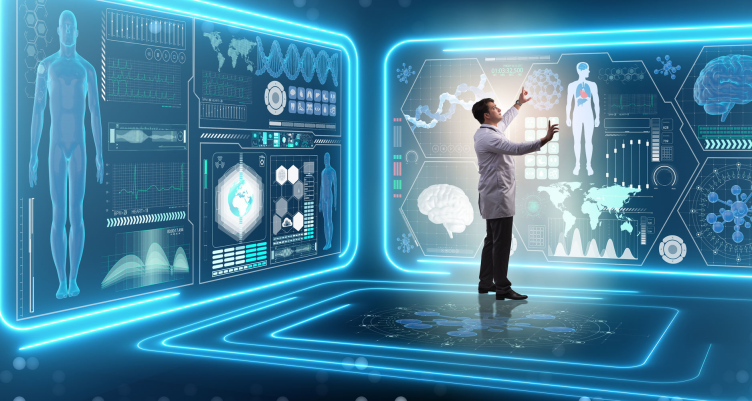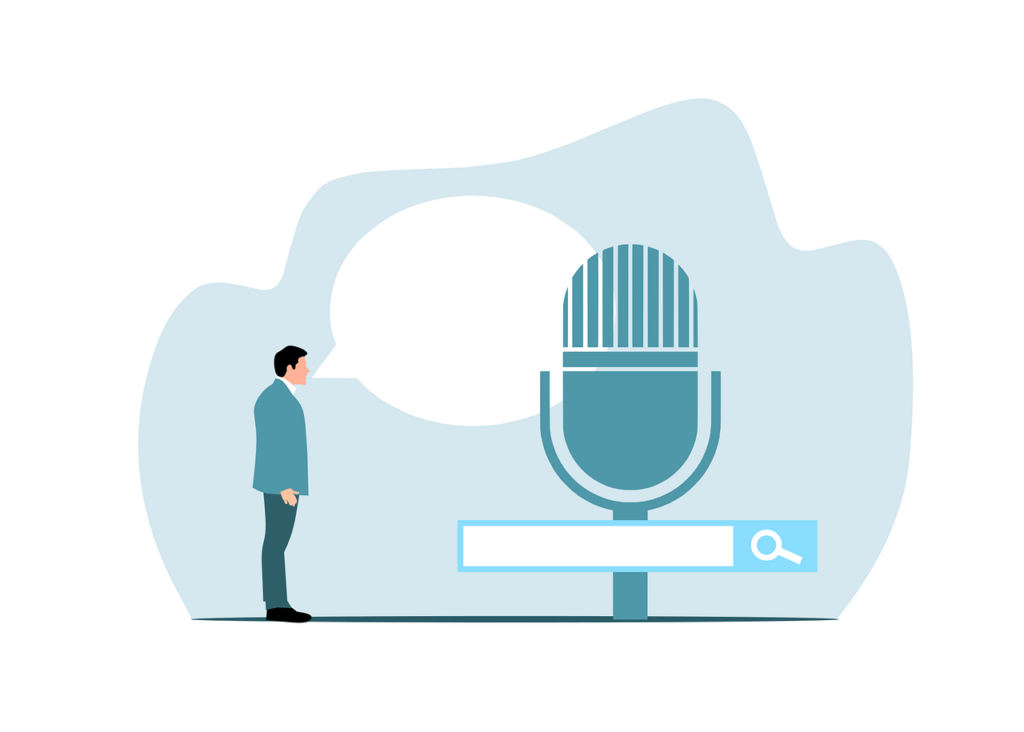For just a moment, imagine a world where everyone, regardless of ability, can effortlessly navigate the digital landscape.
Information seamlessly adapts to individual needs, and technology empowers rather than excludes. This vision is no longer a distant utopia, but a tangible future shaped by the transformative power of Artificial Intelligence (AI) in the Software Development field — That’s right!.
While popular depictions of AI often lean towards dystopian narratives, the reality is far more optimistic, particularly for the realm of digital accessibility.
Now, we’re about to see the seven key ways AI is making the digital world more inclusive and enriching lives in the 2024’s and beyond.
Impact of Artificial Intelligence on Digital Accessibility
Artificial intelligence (AI) is no longer a futuristic concept; in fact, it’s actively transforming various facets of our lives, and its impact on digital accessibility is particularly profound.
The following are seven key areas where AI is making a significant difference more than ever before when it comes to accessibility:
1. Seeing the Unseen
AI-powered image recognition acts as a digital seeing eye, describing images in rich detail and providing crucial context for visually impaired users.
In return, the described images open doors to a wealth of previously inaccessible information, including educational materials, online shopping experiences, and the appreciation of visual art.
For instance, services like Microsoft Seeing AI and Google Lookout leverage image recognition to narrate the surrounding environment, empowering visually impaired individuals with greater independence and mobility.
Incorporating these visual aid services, we can ensure that everyone has equal access to the vast pool of information and experiences available online. This marks a significant shift towards a more inclusive and equitable digital landscape.
2. Breaking Down Language Barriers
You already know that AI-powered translation tools are rapidly evolving, transcending simple word-for-word substitutions and embracing nuanced context and cultural understanding.
And this translates to real-time communication and content consumption across languages, empowering individuals with language disabilities and unlocking access to a global information exchange. Because of this:
- A student with dyslexia effortlessly comprehends complex academic texts translated into their preferred learning style.
- A deaf individual engages in seamless conversations via sign language recognition technology, breaking down communication barriers.
- A foreign traveler navigates a new city with confidence, using AI-powered translation to understand local signage and interact with residents.
Removing language as a barrier is one way to pave the way for deeper understanding, collaboration, and knowledge sharing across borders and cultures. Let’s see the remaining 5 impacts of AI on digital accessibility!
3. Tailoring the Experience
If you have come so far, now imagine a digital environment that adapts to your unique needs and preferences, seamlessly adjusting to create an enjoyable experience. AI-powered personalization is making this vision a reality, revolutionizing accessibility in the following ways:
Dynamic User Interfaces: Websites morph to individual preferences, adjusting font size, color contrast, and layout for diverse abilities.
Users with visual impairments, for example, can benefit from increased font sizes and high-contrast themes, while individuals with motor limitations might prefer simplified layouts with larger buttons.
Content Curation: AI algorithms curate seo-based content or information according to individual needs and learning styles. Users with dyslexia might receive text presented in dyslexia-friendly fonts, while auditory learners could access narrated versions of written content.
And this personalized approach ensures everyone can access and engage with information in a way that resonates with them.
Cognitive Assistance: AI-powered tools can offer real-time support and guidance, anticipating user needs and providing assistance for complex tasks.
Likewise this assistance can be particularly beneficial for individuals with cognitive disabilities, helping them navigate online platforms and complete tasks with greater ease.
So who says that the shift towards personalized accessibility doesn’t mark a significant leap forward in creating a truly equitable digital landscape in 2024? I bet no one!
4. Hearing the Unspoken
Advanced speech recognition and text-to-speech synthesis are astonishingly transforming the way we interact with information. Students with physical limitations effortlessly navigate online learning platforms through voice commands, gaining greater control over their educational experience.
What’s more is that individuals with visual impairments access a wealth of knowledge through narrated texts and descriptions, enriching their understanding of the world around them.
Auditory learners, additionally, gain a deeper grasp of complex concepts through personalized, narrated educational materials.
See? AI is making these scenarios a reality, amplifying the voices of those who may have previously been excluded.
So when you convert text to speech and speech to text, remember that AI bridges communication gaps and ensures equal access to information and learning opportunities for all.
5. Predicting and Preventing Barriers
Sure proactive problem-solving is key to creating a truly inclusive digital world. AI excels in this area, utilizing its analytical prowess to predict and prevent accessibility barriers before they even arise. Here’s how:
- Algorithmic Analysis: AI algorithms meticulously analyze vast amounts of data, identifying potential accessibility issues within digital products and platforms. This includes factors like keyboard navigation compatibility, screen reader compatibility, and color contrast adherence.
- Early Detection: By identifying these issues early in the development process, developers can address them proactively, avoiding the creation of unintentional barriers that might exclude users with disabilities.
- Continuous Improvement: AI-powered monitoring tools can identify and address accessibility issues that might arise over time, ensuring a consistently inclusive user experience across evolving platforms and technologies.
Having this predictive and preventative approach in mind ensures that accessibility is not an afterthought, but rather a core principle embedded in the development process itself.
When anticipating and addressing potential roadblocks, these two advancements – personalized experiences and preventative measures – paint a promising picture of how AI is transforming the accessibility landscape.
Stay tuned for the remaining 2 impacts, where we’ll explore even more ways AI is shaping a more inclusive and equitable digital world.
6. Empowering Assistive Technologies
In 2024 and beyond that Artificial intelligence holds immense potential to empower existing assistive technologies.
Conceptualize in your mind a world where screen readers anticipate user needs, proactively offering relevant context. Additionally, picture voice assistants that seamlessly understand natural language nuances, fostering more intuitive and personalized interactions.
These advancements (assistive accessibility devices), amazingly, can revolutionize the inclusivity experience, removing barriers and creating a more comprehensive digital landscape.
7. Democratizing Creation
Last but not least, the accessibility revolution extends beyond consumption. AI-powered tools are rapidly becoming accessible to everyone, empowering individuals with disabilities to actively participate in content creation.
Tools that automatically transcribe videos, generate detailed image descriptions, or adapt written content for diverse reading levels, pave the way for a more inclusive and diverse creative landscape.
So this democratization of content creation empowers any individuals with disabilities to share their unique perspectives and experiences, enriching the tapestry of human expression.
Conclusion
In conclusion, while AI presents a powerful opportunity to bridge the digital divide, ethical considerations remain paramount — always!
Data privacy, potential biases within algorithms, and accessibility of the AI tools themselves must be carefully addressed when it comes to the idea of digital accessibility.
Collaboration between developers, researchers, and disability advocates is also a crucial thing to ensure responsible and inclusive development, allowing AI to fulfill its potential for good.
So there you go! By harnessing the power of AI responsibly and inclusively, you can work towards a digital future where everyone has the opportunity to participate, connect, and thrive.
Let’s keep the conversation going and share our thoughts and ideas on how AI can shape the future of digital accessibility. Together, we can build a more inclusive and equitable online world for all. Thanks!
Also Read: AI-Powered Solutions for Internet Content Moderation and Censorship




3 thoughts on “7 Impact of Artificial Intelligence on Digital Accessibility”